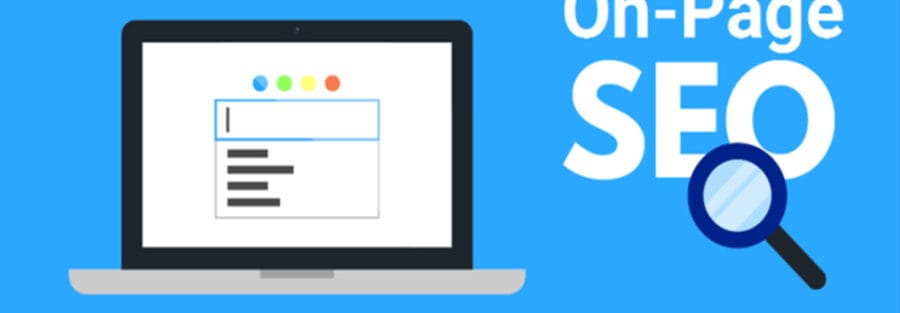On-Page SEO emerges as the cornerstone of search engine success. But what exactly is on-page SEO, and why is it so critical to your online presence? Let’s dive deep into this essential practice and discover how it can help you meet your key performance indicators (KPIs).
Understanding On-Page SEO: A Foundation for Success
On-Page SEO, also known as on-site SEO, refers to the art and science of optimizing individual web pages to improve search engine rankings and attract organic traffic. Unlike off-page SEO, which focuses on external factors like backlinks, on-page SEO is entirely within your control, making it an indispensable tool for digital marketers and website owners alike.
The Key Components of On-Page SEO
On-page SEO is more than just inserting keywords into your content. It involves a holistic approach that blends technical SEO, content strategy, and user experience optimization. Here are its primary elements:
- High-Quality Content: Content is king, but only if it’s relevant, informative, and engaging.
- Title Tags and Meta Descriptions: These HTML elements act as the first impression for both search engines and users.
- Header Tags (H1, H2, H3, etc.): Properly structured headings enhance readability and signal the content hierarchy to search engines.
- URL Structure: Clean, keyword-rich URLs are easier for both users and search engines to understand.
- Internal and External Links: Thoughtfully placed links improve navigation and establish authority.
- Image Optimization: Compress images and use alt text to enhance accessibility and SEO.
- Mobile-Friendliness: A responsive design ensures a seamless experience across devices.
- Page Load Speed: Faster websites rank higher and reduce bounce rates.
Why Is On-Page SEO Important?
Imagine your website as a digital storefront. Without on-page SEO, it’s like having a beautiful shop in the middle of nowhere—no one knows it exists. Here’s how on-page SEO helps your site shine:
1. Improved Visibility
Search engines like Google analyze on-page elements to understand the context of your content. Well-optimized pages rank higher, increasing your visibility in search results.
2. Enhanced User Experience
From faster load times to mobile-friendly designs, on-page SEO ensures your site meets user expectations, leading to longer visit durations and lower bounce rates.
3. Alignment with KPIs
Whether your goal is to drive traffic, generate leads, or increase sales, on-page SEO directly supports these KPIs by attracting and retaining the right audience.
The Role of E-A-T in On-Page SEO
Google emphasizes Expertise, Authoritativeness, and Trustworthiness (E-A-T) as key ranking factors. Here’s how you can demonstrate E-A-T:
- Expertise: Create well-researched, in-depth content that addresses user queries comprehensively.
- Authoritativeness: Build your reputation with authoritative backlinks and expert insights.
- Trustworthiness: Secure your site with HTTPS and provide accurate, transparent information.
Best Practices for On-Page SEO: A Practical Guide
1. Conduct a Content Audit
Start by analyzing your existing content. Identify gaps, update outdated information, and optimize underperforming pages.
2. Optimize Title Tags and Meta Descriptions
Craft compelling, keyword-rich titles and meta descriptions that encourage clicks. For example:
- Before: “SEO Tips”
- After: “10 Proven On-Page SEO Strategies to Boost Your Rankings”
3. Structure Your Headers Effectively
Use H1 for the main title and H2-H3 tags for subheadings. This structure improves readability and helps search engines crawl your content efficiently.
4. Avoid Keyword Cannibalization
Ensure each page targets unique keywords to prevent competing with yourself in search results.
5. Optimize for Featured Snippets
Format your content with bullet points, numbered lists, and concise definitions to increase your chances of appearing in featured snippets.
Real-Life Example: The Power of On-Page SEO
Let’s say you run a tech blog. By optimizing a post titled “What is On-Page SEO?”, you incorporate:
- A clean URL:
yourwebsite.com/what-is-on-page-seo - Engaging content addressing user intent.
- Internal links to related topics like off-page SEO and technical SEO.
The result? Higher rankings, increased traffic, and better engagement metrics—all contributing to your KPIs.
Addressing Counterarguments
Some argue that off-page SEO is more critical than on-page. While backlinks are indeed valuable, they’re only effective when paired with strong on-page foundations. Without optimized content, even the best link-building strategy falls short.
Conclusion: A Constant Process
On-page SEO isn’t a one-and-done task. It’s a dynamic process requiring regular audits, updates, and adaptations to align with evolving algorithms and user behavior.
By mastering on-page SEO, you’re not just optimizing your website—you’re building a digital presence that resonates with both search engines and users. Ready to take your website to the next level? Start optimizing today!
If you’re looking for expert guidance on implementing on-page SEO strategies, reach out—we’re here to help you meet your KPIs and achieve sustainable growth.




